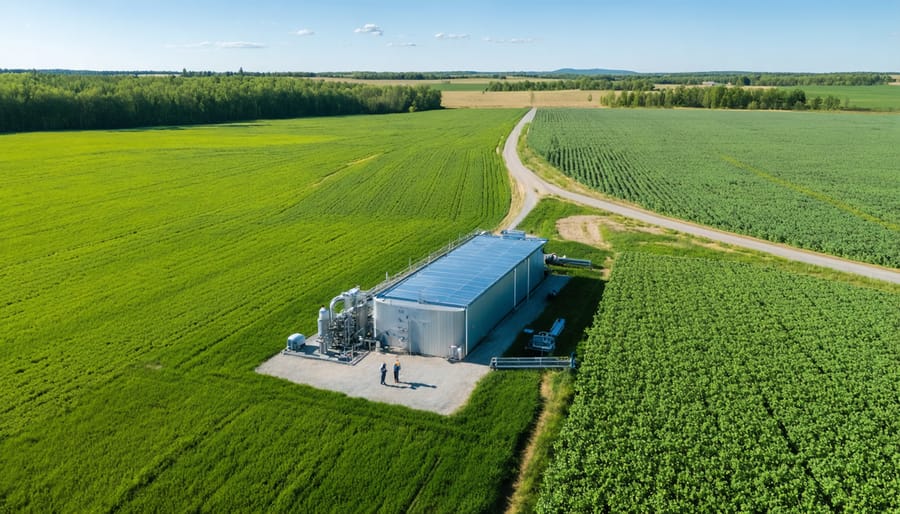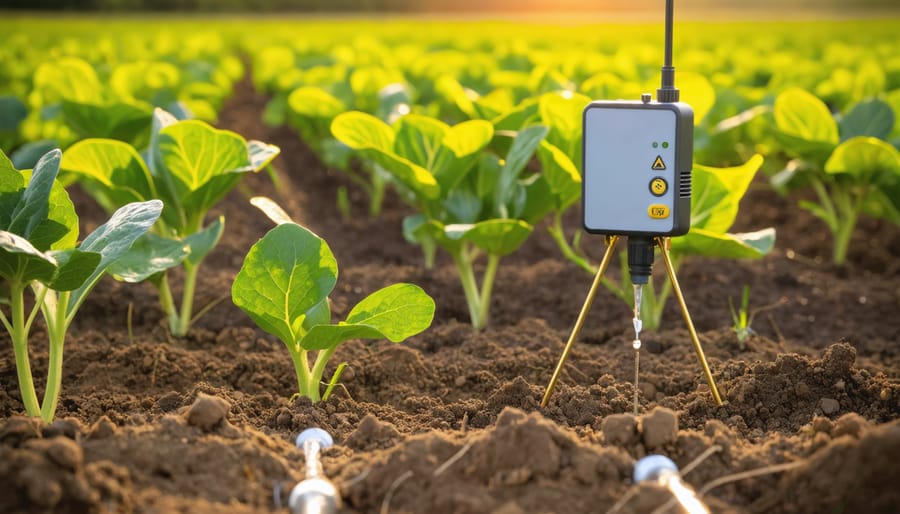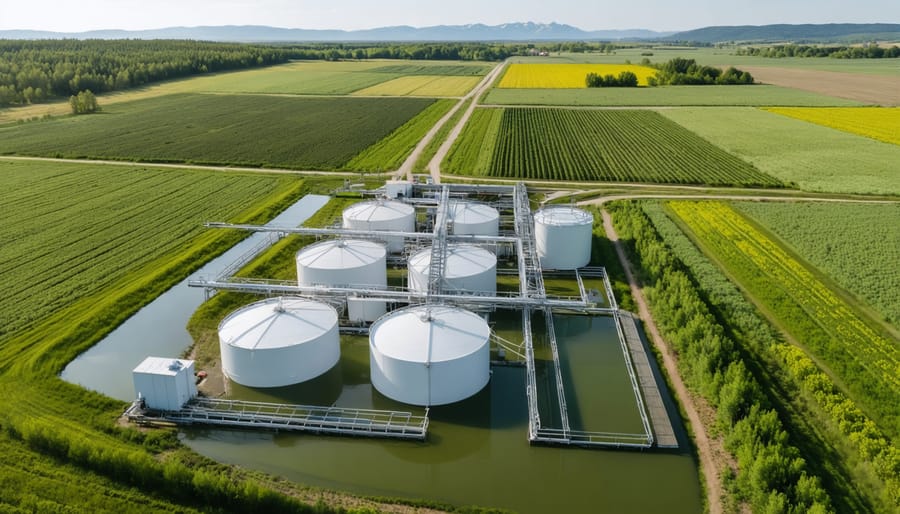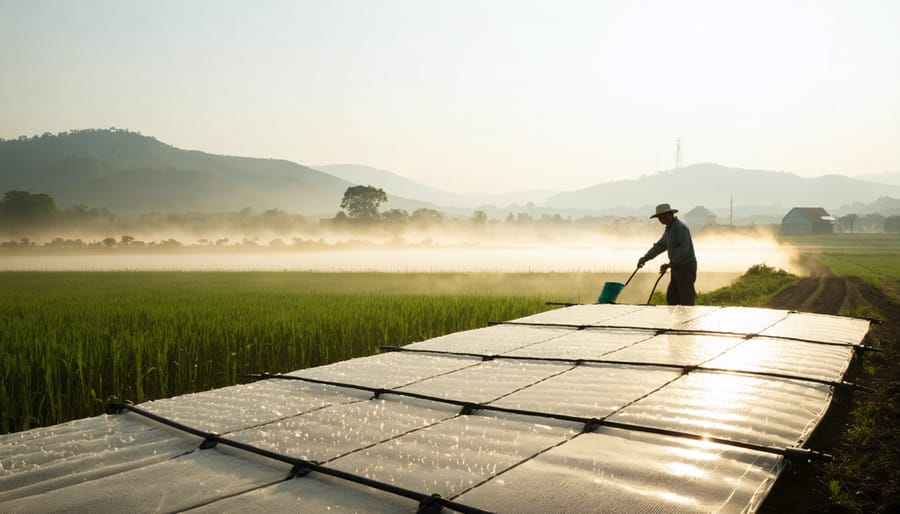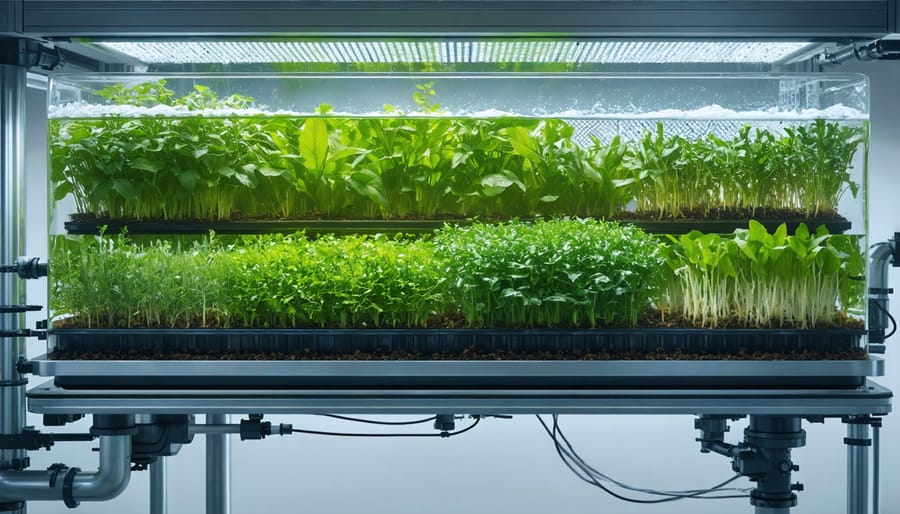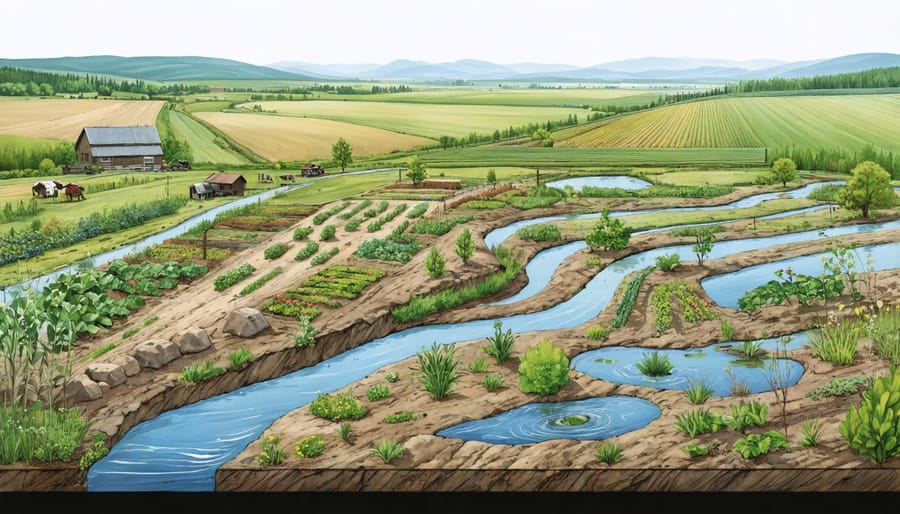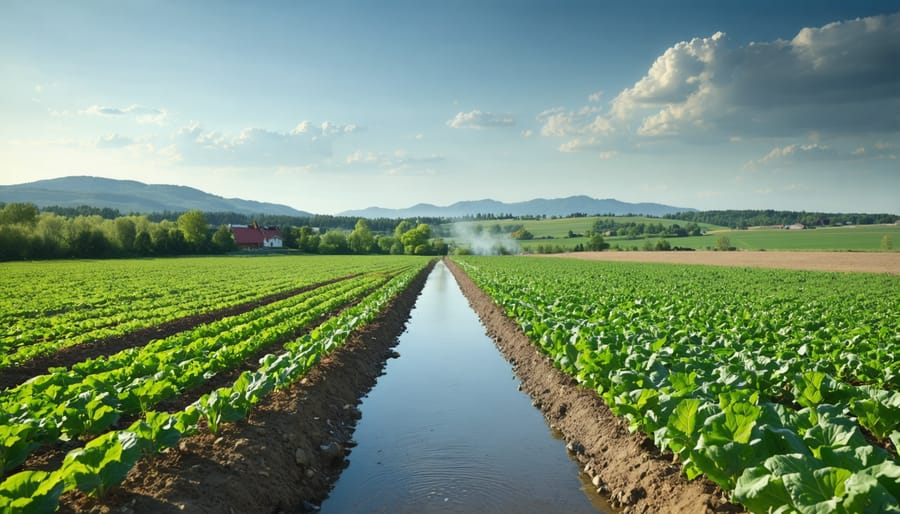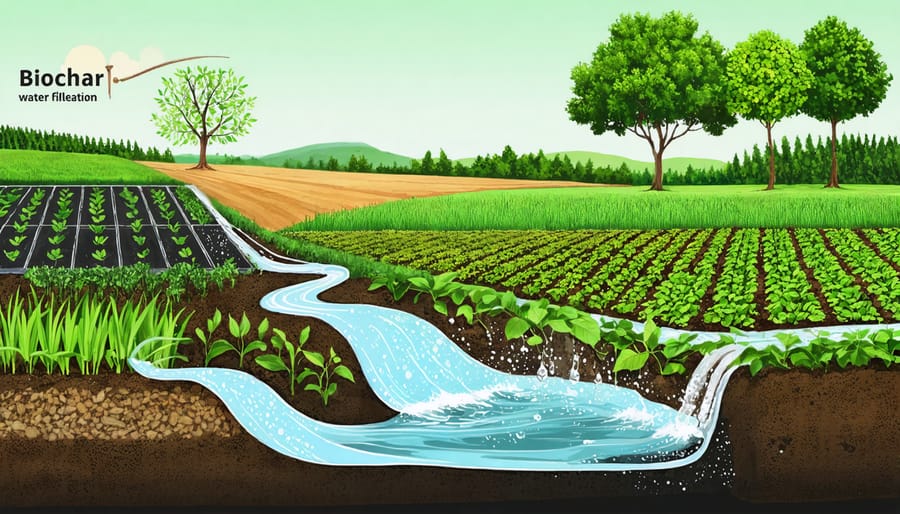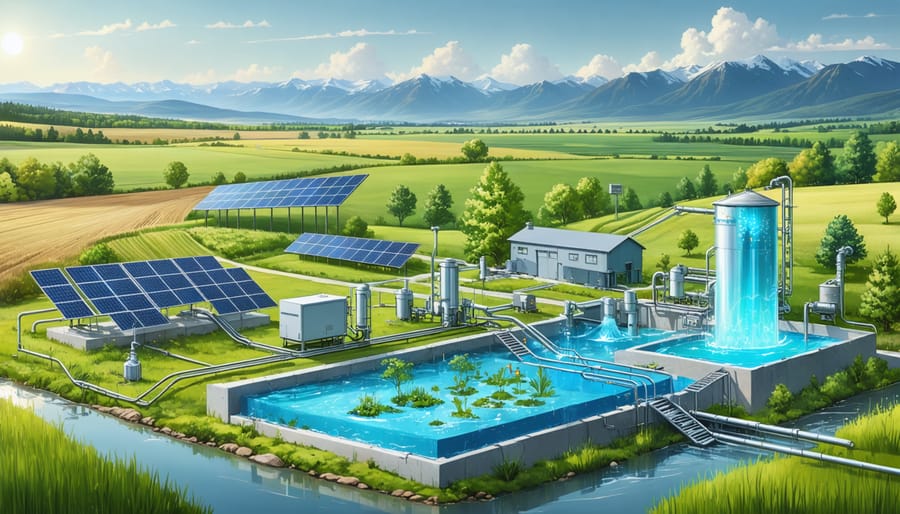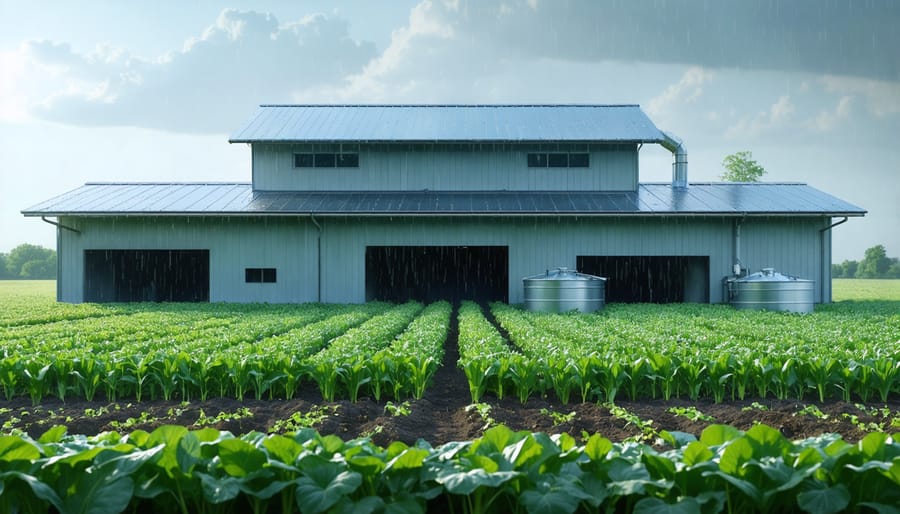Harness beneficial bacteria to revolutionize your farm’s water treatment system while preventing water pollution and meeting Alberta’s stringent agricultural standards. Aerobic and facultative bacteria break down organic contaminants, reducing biochemical oxygen demand (BOD) by up to 90% in properly maintained treatment systems. These microscopic powerhouses transform harmful compounds into harmless byproducts while naturally controlling pathogens through competitive exclusion.
Canadian farmers have successfully implemented bacterial water treatment across diverse operations, from small-scale vegetable farms to large dairy operations. In Alberta’s Peace River region, organic producers report 40% lower operating costs compared to traditional chemical treatment methods, while achieving superior water quality metrics that exceed provincial requirements.
Modern bacterial treatment systems integrate seamlessly with existing infrastructure, requiring minimal modification to current setups. This biological approach aligns perfectly with organic certification requirements while providing robust, year-round performance even during Alberta’s harsh winters.
The Power of Microbial Water Treatment
Key Bacterial Species in Water Treatment
Several beneficial bacteria species play crucial roles in organic water treatment systems across Alberta farms. Nitrosomonas and Nitrobacter are the workhorses of the nitrification process, working together to convert harmful ammonia into less toxic nitrates. These bacteria thrive in well-oxygenated environments between 20-30°C, conditions commonly found in properly maintained treatment systems.
Bacillus subtilis, a hardy species found naturally in soil, helps break down organic matter and reduces pathogen levels in water. Many Alberta farmers have reported success using Bacillus-based treatments in their irrigation systems, particularly during the warmer months.
Pseudomonas species are excellent at degrading complex organic compounds and have shown promising results in reducing chemical contamination. These bacteria are especially valuable in areas where runoff from conventional farms might affect water quality.
For manure management, Lactobacillus species help control odours and break down organic waste, making them particularly useful in livestock operations. These beneficial bacteria work best when water temperatures stay above 15°C, which typically means active treatment from late spring through early fall in our climate.
Remember, maintaining the right conditions for these helpful bacteria is key to successful water treatment.

Natural Purification Process
In nature, beneficial bacteria play a crucial role in natural purification processes, breaking down organic matter and filtering out harmful contaminants from water. These microscopic organisms form complex communities that work together to maintain water quality in streams, rivers, and wetlands across Alberta’s diverse landscape.
The process begins when aerobic bacteria consume organic materials, converting them into simpler compounds. These bacteria thrive in oxygen-rich environments, typically in the upper layers of water bodies. Meanwhile, anaerobic bacteria work in deeper zones where oxygen is scarce, breaking down heavier pollutants and converting nitrates into nitrogen gas.
What’s particularly remarkable for our farming community is how these bacteria create biofilms – thin, sticky layers that trap additional contaminants and provide habitat for other beneficial microorganisms. This natural system inspired many of our modern water treatment approaches, including the biological filters commonly used on Alberta farms.
Understanding these natural processes helps us work with, rather than against, nature’s own cleaning mechanisms, leading to more sustainable and effective water management practices on our farms.
Implementation on Alberta Farms
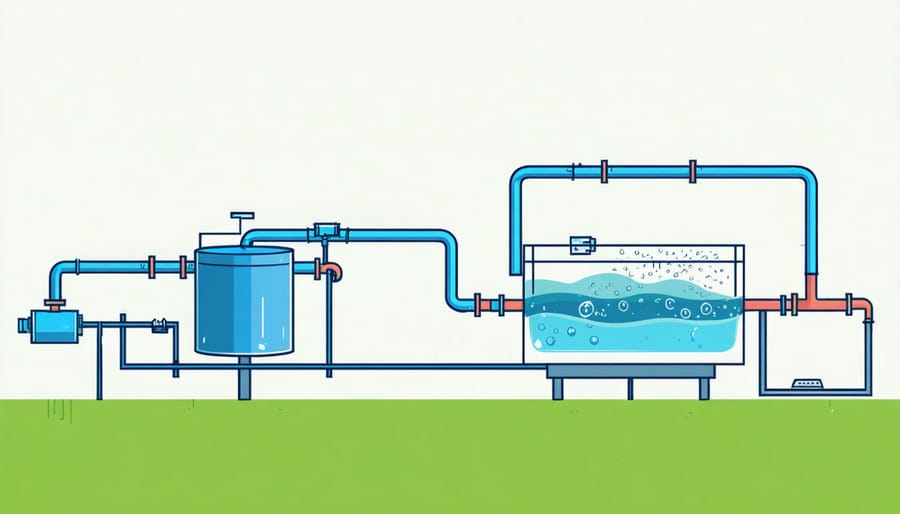
System Setup and Maintenance
Setting up a bacterial water treatment system requires careful planning and consistent maintenance to ensure optimal performance. For Alberta farmers considering decentralized treatment systems, here’s a practical guide to get started.
First, assess your water source and conduct baseline testing through an accredited laboratory. This will help determine the specific bacterial strains needed for treatment. Install a pre-filtration system to remove larger particles, typically using 5-micron filters for agricultural applications.
Next, set up the bacterial cultivation chamber, maintaining it at 20-25°C for optimal growth. Install monitoring equipment to track pH levels (aim for 6.5-7.5), dissolved oxygen, and temperature. Consider adding a backup power supply to prevent system disruptions during outages.
For system maintenance:
– Check pH levels weekly
– Clean pre-filters monthly
– Replace bacterial cultures every 3-4 months
– Inspect pumps and aerators quarterly
– Conduct water quality tests bi-monthly
Many Alberta farmers find success with automated monitoring systems that send alerts when parameters fall outside optimal ranges. Keep detailed maintenance logs to track system performance and identify patterns that might affect treatment efficiency.
Remember to maintain proper safety protocols, including wearing appropriate protective equipment when handling bacterial cultures. Store replacement cultures according to manufacturer specifications, typically at 4°C.
For best results, establish a regular maintenance schedule and train multiple team members on system operations. Consider joining local farming networks to share experiences and troubleshooting tips with other farmers using similar systems.
Cost Considerations and ROI
Implementing bacterial water treatment systems requires careful consideration of both upfront costs and long-term returns. For a typical Alberta farm operation, initial setup costs range from $5,000 to $15,000, depending on the system’s size and complexity. This includes equipment, installation, and initial bacterial cultures.
However, the ROI often becomes apparent within the first two years. Many farmers report 15-30% reduction in chemical treatment costs and a significant decrease in equipment maintenance expenses. For example, the Turner Family Farm in Red Deer saved approximately $8,000 annually by switching to bacterial treatment methods.
Operating costs are relatively modest, typically ranging from $800 to $2,000 per year for bacterial media replacement and system maintenance. Energy consumption is minimal, usually adding only $20-40 to monthly utility bills. These costs are offset by reduced need for chemical treatments and lower equipment replacement frequency.
Additional financial benefits include improved crop yields due to better water quality and potential premium pricing for organically grown produce. Government grants and environmental incentives can help offset initial costs – the Canadian Agricultural Partnership often provides funding of up to 30% for sustainable water treatment solutions.
When calculating ROI, consider indirect benefits like reduced soil contamination, improved livestock health, and enhanced farm sustainability certification status. Many Alberta farmers report complete system cost recovery within 3-5 years of implementation.

Success Stories from Canadian Farms
The Henderson family farm in Lacombe County stands as a shining example of successful bacterial water treatment implementation. After struggling with poor water quality in their irrigation system for years, the Hendersons installed a biological treatment system in 2019. “Within three months, we saw a dramatic improvement in our crop health,” shares Sarah Henderson. “Our water testing showed a 90% reduction in harmful bacteria, and our vegetable yields increased by 25% in the first season.”
In Rocky View County, the Miller Brothers’ organic dairy operation demonstrates how bacterial treatment can benefit livestock operations. Their innovative system, implemented in 2020, uses beneficial bacteria to treat both drinking water and waste management systems. “Our cattle health markers improved significantly,” reports Tom Miller. “We’ve seen fewer digestive issues in our herd and reduced our veterinary costs by nearly 30%.”
The Wheatland Community Farming Cooperative presents another success story, where five neighboring farms pooled resources to implement a shared bacterial water treatment facility. This collaborative approach not only made the technology more accessible but also created a support network for maintaining and optimizing the system. The cooperative reports an average 40% reduction in chemical inputs across all participating farms.
Red Deer County’s Zhang Family Greenhouse Operations switched to bacterial water treatment in 2018, revolutionizing their hydroponic growing system. “The change was remarkable,” explains Wei Zhang. “Our water circulation system stays cleaner longer, and we’ve reduced our maintenance downtime by 60%. Plus, our tomato and cucumber crops show better resistance to common diseases.”
These success stories share common elements: careful planning, commitment to the learning curve, and regular system monitoring. Most farms reported initial results within 2-3 months, with significant improvements continuing throughout the first year. The Alberta Agricultural Water Engineers Association notes that farms using bacterial treatment systems have reduced their water consumption by an average of 20% while improving overall water quality metrics.
Notably, all these operations emphasized the importance of starting with proper water testing and developing a customized treatment plan. They also highlight the value of connecting with other farmers who have experience with these systems, creating an informal knowledge-sharing network that has helped spread successful practices throughout the province.
Regulatory Compliance and Certification
In Canada, understanding and complying with regulatory requirements for bacterial water treatment is crucial for organic certification. As water’s role in organic farming continues to evolve, farmers must stay informed about current standards and certification processes.
The Canadian Organic Standards (COS) outline specific requirements for water quality and treatment methods. Under these standards, bacterial water treatment systems must use approved biological agents and maintain documentation of all treatments and testing procedures. The Canadian General Standards Board (CGSB) requires regular water quality monitoring and reporting, with specific emphasis on bacterial levels and treatment efficacy.
For Alberta farmers, the Environmental Farm Plan (EFP) provides additional guidance on water management practices. This voluntary program helps ensure compliance with both provincial and federal regulations while supporting sustainable farming practices. Key certification requirements include:
– Monthly water quality testing and documentation
– Regular maintenance records for treatment systems
– Annual inspection of treatment equipment
– Emergency response protocols for system failures
– Staff training documentation
The Canadian Food Inspection Agency (CFIA) oversees organic certification and requires farmers to maintain detailed records of their water treatment processes. These records must demonstrate consistent compliance with safety standards and organic principles. Treatment systems must be approved by certification bodies and meet specific criteria for:
– Bacterial population monitoring
– Treatment effectiveness verification
– Environmental impact assessment
– Safety protocols and documentation
– Quality control measures
Local organic certification bodies can provide guidance on specific requirements and help farmers navigate the certification process. Many Alberta farmers have successfully implemented compliant systems through careful planning and regular consultation with certification experts.
Remember that regulations may update periodically, so maintaining open communication with certification bodies and staying current with industry standards is essential for continued compliance.
The role of bacteria in water treatment represents a crucial intersection of traditional farming wisdom and modern sustainable practices. Throughout Alberta, farmers are increasingly recognizing the value of these natural purification systems, which offer both environmental and economic benefits. By implementing bacterial water treatment solutions, our agricultural community has demonstrated that cleaner water and healthier crops are achievable without relying solely on chemical treatments.
As we’ve explored, successful bacterial water treatment requires careful planning, regular monitoring, and a commitment to maintaining optimal conditions for beneficial microorganisms. The experiences of fellow Alberta farmers show that these systems can effectively reduce contamination while supporting organic certification requirements. Whether you’re managing a small family farm or overseeing larger agricultural operations, bacterial water treatment can be adapted to suit your specific needs.
Remember that support is readily available through local agricultural extension services and farming cooperatives. Many of your neighbours have already embarked on this journey and are willing to share their experiences. Consider starting with a pilot project on a smaller scale to build confidence and expertise before expanding.
By embracing bacterial water treatment, you’re not just improving your farm’s water quality – you’re contributing to a more sustainable agricultural future for Alberta. Take the first step by connecting with local experts and fellow farmers who can guide you through the implementation process. Together, we can build a stronger, more sustainable farming community while protecting our precious water resources.

